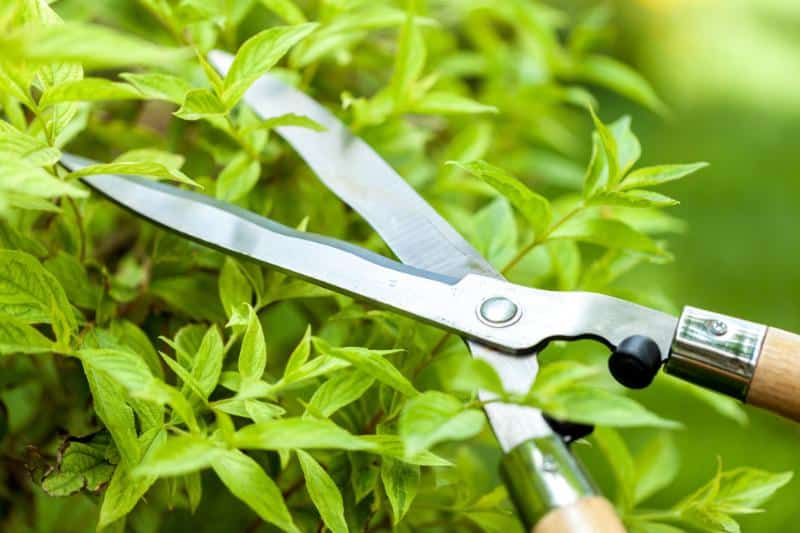Trimming hedges might seem like a mundane chore, but it’s an essential task to keep your garden looking tidy and well-maintained. However, achieving that perfectly manicured hedge requires more than just a pair of clippers and some spare time. To help you master the art of hedge trimming like a pro, here are some quick tips that will elevate your hedge game and leave your neighbors envious.

1. Get a Professional Help
If you find that trimming hedges is too time-consuming or physically demanding, don’t hesitate to seek professional help. A professional landscaper or gardening service can provide expert advice and assistance, ensuring that your hedges are trimmed to perfection without the hassle. For trimming hedges, tree service concord offers expert assistance and specialized equipment to ensure precise cuts and optimal hedge health. They have the experience, tools, and knowledge to tackle even the most challenging hedge-trimming tasks, saving you time and effort in the process.
2. Choose the Right Time
Timing is crucial when it comes to hedge trimming. Aim to trim your hedges during the dormant season, typically in late winter or early spring, before new growth begins. Trimming during this time encourages bushier growth and ensures that your hedges look their best throughout the growing season. Avoid trimming hedges during periods of extreme heat or drought, as this can stress the plants and hinder their recovery.
- Dormant Season: Trim your hedges during the dormant season, typically in late winter or early spring, before new growth begins. This timing promotes bushier growth and ensures a neat appearance throughout the growing season.
- Avoid Extreme Conditions: Steer clear of trimming hedges during periods of extreme heat or drought. Trimming during these conditions can stress the plants and hinder their recovery, leading to potential damage or stunted growth.
- Consider the Weather Forecast: Check the weather forecast before scheduling your hedge trimming session. Aim for a day with mild temperatures and overcast skies to minimize stress on the plants and ensure optimal conditions for recovery.
- Regular Maintenance: Implement a regular maintenance schedule for your hedges, including trimming, watering, and fertilizing, to keep them healthy and vibrant year-round. Consistent care will result in healthier, more resilient plants that are better equipped to withstand environmental stressors.
3. Consider the Hedge Species
Different hedge species have unique growth habits and requirements, so it’s essential to consider the specific needs of your hedge plants when trimming. Research the optimal trimming techniques for the species you’re working with, taking into account factors such as growth rate, branching pattern, and flowering season.
For example, fast-growing hedges may require more frequent trimming to maintain their shape, while flowering hedges may benefit from pruning after they have finished blooming to avoid cutting off next season’s flower buds.
4. Start with a Straight Line
Before you start trimming, establish a straight line along the top of the hedge to serve as a guide. You can achieve this by stretching a piece of string between two stakes or using a long, straight board as a guide. Trim along this line first, cutting any overhanging branches or uneven growth to create a neat, straight edge. Once you have the top line established, you can focus on shaping the sides of the hedge to your desired width and height.
5. Use the Right Technique
When trimming hedges, use a smooth, sweeping motion to make clean cuts and avoid damaging the branches. Hold the shears or trimmer at a slight angle to the hedge, cutting with the blades parallel to the surface for a uniform finish. Take your time and work methodically, trimming small sections at a time to ensure even growth and a balanced shape. Step back periodically to assess your progress and make any necessary adjustments.
6. Maintain Proper Hedge Health
Proper hedge maintenance goes beyond just trimming. Keep your hedges healthy and vigorous by watering them regularly, especially during dry spells, and applying a balanced fertilizer to encourage strong growth.
Monitor for signs of pests or diseases, such as discolored foliage or unusual growth patterns, and address any issues promptly to prevent them from spreading. Regularly remove any dead or diseased branches to promote airflow and prevent the spread of infection.
7. Finish with a Clean-Up
Once you’ve finished trimming your hedges, don’t forget to tidy up the area. Remove any debris, such as clippings and fallen branches, from around the base of the hedge to prevent it from smothering the plants or harboring pests. Sweep or rake the area clean, and consider applying a fresh layer of mulch to help retain moisture and suppress weeds. A clean finish not only enhances the appearance of your hedges but also promotes their overall health and longevity.

Trimming hedges like a pro requires a combination of the right tools, techniques, and timing. By investing in quality tools, choosing the right time to trim, and following proper trimming techniques, you can achieve beautifully manicured hedges that enhance the appearance of your garden. Additionally, maintaining proper hedge health and finishing with a thorough clean-up will ensure that your hedges remain healthy and vibrant year-round.
